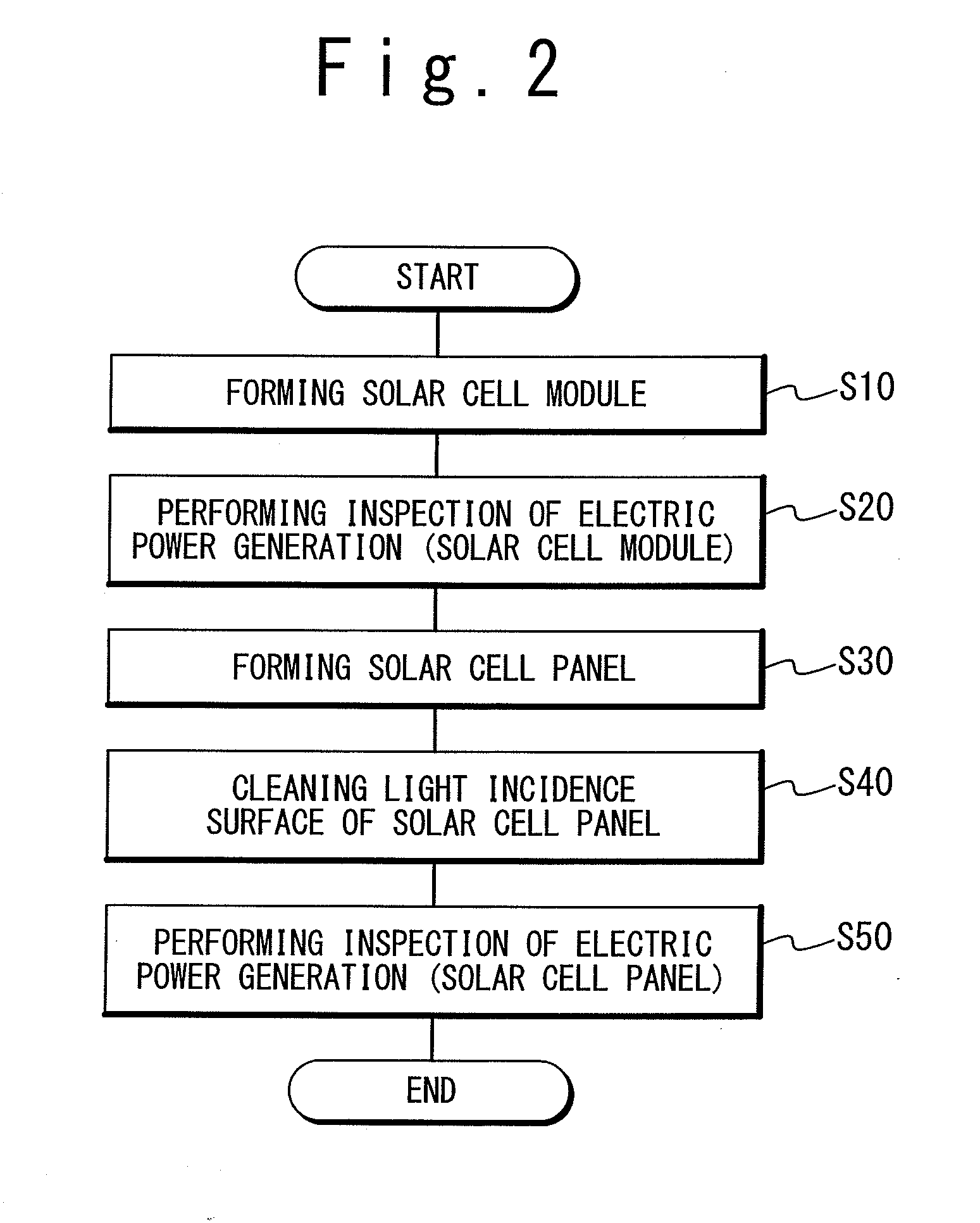Method of manufacturing solar panel
- Summary
- Abstract
- Description
- Claims
- Application Information
AI Technical Summary
Benefits of technology
Problems solved by technology
Method used
Image
Examples
embodiment 1
[0076]The embodiments 1 refer to solar cell panel substrates subjected to the inspection of the electric power generation (step S50) between times t4 and t5. For the solar cell panel substrate of the embodiment 1, cleaning of physically wiping the light incidence surface (step S40) is performed immediately before the inspection of the electric power generation (step S50). The cleaning (step S40) is achieved by installing nonwoven fabric in a carrying line and then wiping the light incidence surface while pushing the nonwoven fabric against the light incidence surface. Bemcot (product name: manufactured by ASAHI KASEI FIBERS CORPORATION) is used as the nonwoven fabric.
embodiment 2
[0077]The embodiments 2 refer to solar cell panel substrates subjected to the inspection of the electric power generation (step S50) between times t6 and t7. For the solar cell panel substrate of the embodiment 2, cleaning the light incidence surface with the organic solvent (step S40) is performed immediately before the inspection of the electric power generation (step S50). The cleaning (step S40) is achieved by wiping the light incidence surface with nonwoven fabric previously soaked with the organic solvent.
embodiment 3
[0078]The embodiments 3 refer to solar cell panel substrates subjected to the inspection of the electric power generation (step S50) between times t8 and t9. For the solar cell panel substrate of the embodiment 3, as is the case with the embodiment 2, wiping is performed with the nonwoven fabric soaked with the organic solvent, and further, as is the case with the embodiment 1, cleaning by wiping the light incidence surface with the nonwoven fabric while physically pushing the nonwoven fabric thereagainst.
Experimental Results
[0079]FIG. 6 is a diagram showing results of the comparative examples 1 and 2 and the embodiments 1 to 3, which summarizes the results of FIG. 5. The (average) output change between the inspections of the electric power generation (between steps S50 and S20) was −4.7% for the comparative example 1 and −5.1% for the comparative example 2, while this output change was −3.3% for the embodiment 1, −2.5% for the embodiment 2, and −0.8% for the embodiment 3. That is, ...
PUM
| Property | Measurement | Unit |
|---|---|---|
| Length | aaaaa | aaaaa |
| Length | aaaaa | aaaaa |
| Fraction | aaaaa | aaaaa |
Abstract
Description
Claims
Application Information
 Login to View More
Login to View More - R&D
- Intellectual Property
- Life Sciences
- Materials
- Tech Scout
- Unparalleled Data Quality
- Higher Quality Content
- 60% Fewer Hallucinations
Browse by: Latest US Patents, China's latest patents, Technical Efficacy Thesaurus, Application Domain, Technology Topic, Popular Technical Reports.
© 2025 PatSnap. All rights reserved.Legal|Privacy policy|Modern Slavery Act Transparency Statement|Sitemap|About US| Contact US: help@patsnap.com



